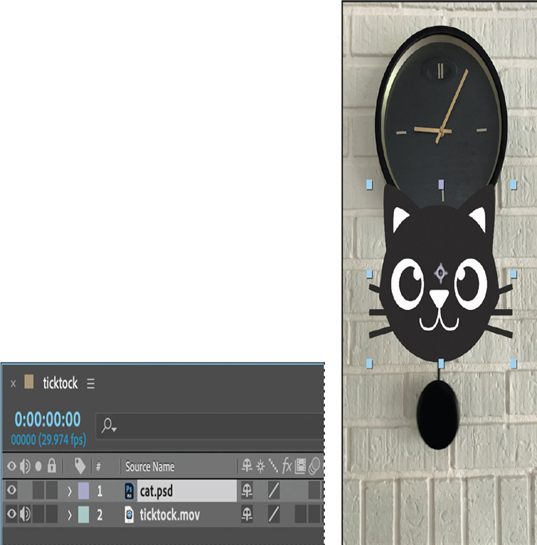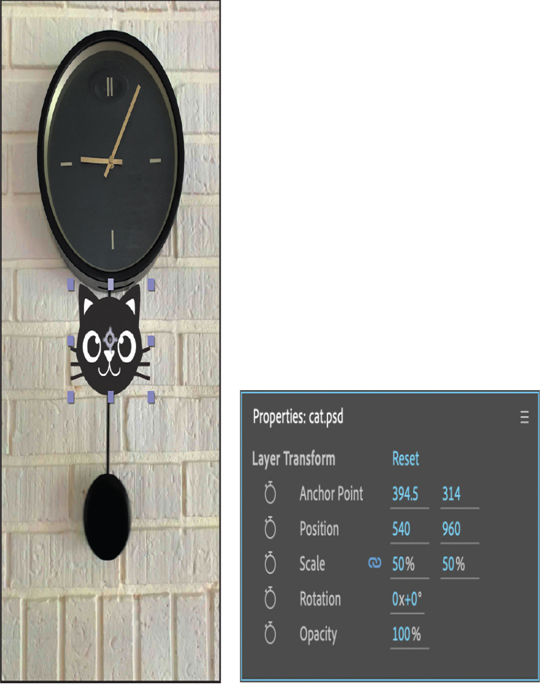If you’ve just completed the first project, and After Effects is open, skip to step 3. Otherwise, restore the default application settings for After Effects. See “Restoring default preferences” on page 3. You’ll start by importing assets and creating the composition.
- Start After Effects, and then immediately hold down Ctrl+Alt+Shift (Windows) or Command+Option+Shift (macOS) to restore default preferences settings. In the Startup Repair Options dialog box, click Reset Preferences.
- Click New Project in the Home window.
After Effects opens to display a new, untitled project.
- Choose File > Save As > Save As.
- In the Save As dialog box, navigate to the Lessons/Lesson14/Finished_Projects folder.
- Name the project Lesson14_Tracking.aep, and then click Save.
- Click New Composition From Footage in the Composition panel.
- Navigate to the Lessons/Lesson14/Assets folder. Select the ticktock.mov file, and click Import or Open.

After Effects creates a new composition named ticktock with the same pixel size, aspect ratio, frame rate, and duration of the source clip.
- Click the Play button in the Preview panel to preview the footage. Press the spacebar to stop the preview when you’ve seen the whole clip.
- Double-click an empty area of the Project panel to open the Import File dialog box, and then navigate to the Lessons/Lesson14/Assets folder.
- Select the cat.psd file, and then click Import or Open.
- Drag the cat.psd file into the Timeline panel, and place it at the top of the layer stack.

12. With the cat.psd layer selected, change its Scale property to 50% in the Properties panel.

Positioning the track point
After Effects tracks motion by matching pixels from a selected area in a frame to pixels in each succeeding frame. You create track points to specify the area to track. A track point contains a feature region, a search region, and an attach point. After Effects displays the track point in the Layer panel as it tracks.
You will track the pendulum by placing tracking regions around the area that you’ll track another layer to. The key to successful tracking is to position the feature region over an area with distinct characteristics. The cat layer is above the ticktock layer in the composition, so you are ready to position the track point.
- Press the Home key or move the current-time indicator to the beginning of the time ruler.
- Select the ticktock layer, and choose Animation > Track Motion. The Tracker panel opens; increase its size if you can’t see all the options.